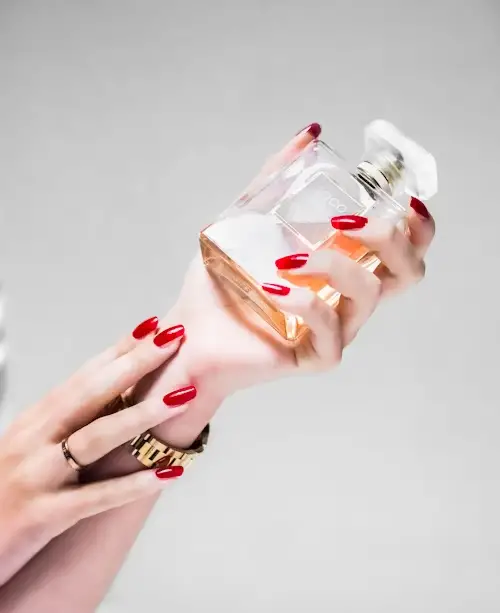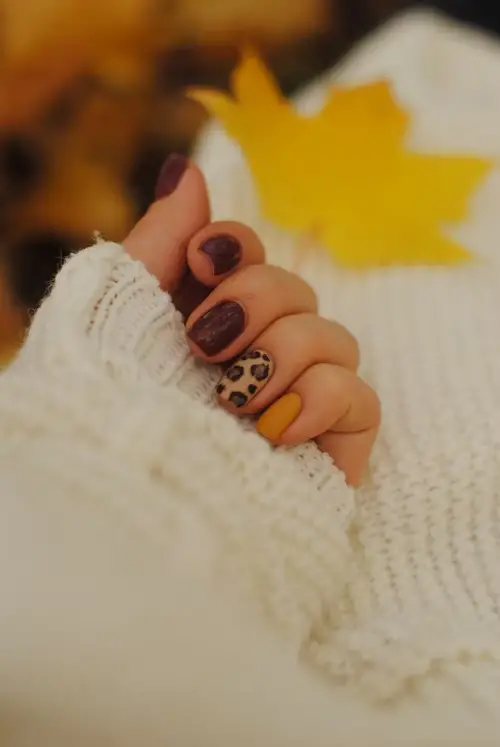What Your Nail Color Says About Your Health: Deciphering Clues at Your Fingertips

Nails, those small yet significant features at the tips of our fingers and toes, can provide valuable insights into our overall health and well-being. Beyond serving as a canvas for beauty and self-expression, nails often reveal subtle clues about underlying health conditions, nutritional deficiencies, and lifestyle factors. One of the most noticeable indicators of potential health issues is the color of our nails. In this article, we’ll explore what different nail colors may signify and what they could reveal about your health.


Page Contents
- 1 What Your Nail Color Says About Your Health: Deciphering Clues at Your Fingertips
- 2 Here’s a list of foods and conditions that may contribute to or exacerbate nail discoloration, along with recommendations for avoiding them:
- 3 Here’s a list of corresponding multivitamins and minerals that may be necessary for addressing nail discoloration:
- 4 Conclusion:
What Your Nail Color Says About Your Health: Deciphering Clues at Your Fingertips
1. Pink or Flesh-Colored Nails:
Healthy nails typically have a pinkish hue due to the underlying blood vessels in the nail bed. If your nails appear pale or very light pink, it could indicate poor circulation, anemia, or nutritional deficiencies such as iron deficiency anemia or vitamin B12 deficiency.
2. Yellow Nails:
Yellow discoloration of the nails may be a sign of several underlying health issues. Common causes of yellow nails include fungal infections, particularly onychomycosis, which can cause thickening, crumbling, and yellowing of the nails. Yellow nails may also indicate respiratory conditions such as chronic bronchitis or smoking-related discoloration from tobacco use.


3. Blue or Purple Nails:
Nails that appear bluish or purple in color, known as cyanosis, may be a sign of reduced oxygen levels in the blood. This could be due to respiratory problems such as asthma or chronic obstructive pulmonary disease (COPD), cardiovascular conditions like heart failure or congenital heart defects, or circulatory issues such as Raynaud’s phenomenon or peripheral artery disease.
4. White Nails:
White discoloration of the nails, known as leukonychia, can have various causes. Small white spots or streaks on the nails, called leukonychia punctata, are often harmless and may result from minor trauma or injury to the nail matrix. However, widespread whitening of the nails, known as leukonychia totalis, may indicate more serious underlying conditions such as liver disease, kidney failure, or zinc deficiency.
5. Brown or Black Nails:
Brown or black discoloration of the nails may result from several factors. Subungual melanoma, a type of skin cancer that affects the nail bed, can cause dark streaks or bands on the nails. In some cases, darkening of the nails may be due to trauma, fungal infections, or medications such as chemotherapy drugs.
6. Green Nails:
Green discoloration of the nails is often associated with bacterial or fungal infections. Pseudomonas bacteria, in particular, can produce a greenish hue when they infect the nail bed or surrounding skin. Green nails may also result from prolonged exposure to chemicals or artificial dyes in nail polish.
Here’s a list of foods and conditions that may contribute to or exacerbate nail discoloration, along with recommendations for avoiding them:
- Foods High in Sugar and Processed Carbohydrates:
- Consumption of sugary and processed foods can contribute to inflammation and weaken the immune system, making nails more susceptible to infections and discoloration. Avoid excessive intake of candies, pastries, sugary beverages, and processed snacks.
- Alcohol:
- Excessive alcohol consumption can lead to dehydration and nutrient deficiencies, which may affect nail health and contribute to discoloration. Limit alcohol intake and stay hydrated by drinking plenty of water throughout the day.
- Highly Processed Foods:
- Highly processed foods often contain artificial additives, preservatives, and unhealthy fats that can negatively impact overall health, including nail health. Opt for whole, minimally processed foods such as fruits, vegetables, lean proteins, and whole grains instead.
- Fried and Greasy Foods:
- Foods high in unhealthy fats, such as fried foods and greasy fast food items, can contribute to inflammation and poor circulation, which may affect nail health. Choose healthier cooking methods such as baking, grilling, or steaming, and incorporate sources of healthy fats like avocados, nuts, and seeds into your diet.
- Acidic Foods and Beverages:
- Acidic foods and beverages can weaken tooth enamel and may also affect nail health by contributing to mineral depletion. Limit consumption of acidic foods such as citrus fruits, tomatoes, and vinegar, and drink acidic beverages like citrus juices and sodas in moderation.
- Nail Trauma:
- Avoid activities that may cause trauma or injury to the nails, such as biting or picking at the nails, using nails as tools, or wearing overly tight or restrictive footwear. Trauma to the nails can lead to discoloration, infection, and other nail abnormalities.
- Poor Hygiene Practices:
- Practicing good nail hygiene is essential for preventing nail discoloration and infections. Avoid habits such as neglecting to clean under the nails, using dirty or contaminated nail tools, and sharing personal nail care items with others.
- Exposure to Harsh Chemicals:
- Chemical exposure from household cleaning products, nail polish removers, and harsh detergents can weaken nails and contribute to discoloration. Wear gloves when using harsh chemicals and avoid prolonged exposure to these substances.
- Underlying Health Conditions:
- Certain underlying health conditions such as diabetes, liver disease, kidney disease, and thyroid disorders can affect nail health and cause discoloration. If you have a known health condition, work with your healthcare provider to manage it effectively and monitor any changes in nail health.
By avoiding these potential triggers and adopting healthy lifestyle habits, you can help maintain the health and vibrancy of your nails and reduce the risk of nail discoloration. If you experience persistent or severe nail discoloration despite making dietary and lifestyle changes, consult with a healthcare professional for further evaluation and guidance.
Here’s a list of corresponding multivitamins and minerals that may be necessary for addressing nail discoloration:
- Yellow Nails:
- Biotin: Biotin, also known as vitamin B7, helps strengthen nails and may help address yellowing caused by fungal infections or nutritional deficiencies.
- Vitamin E: Vitamin E is an antioxidant that can help promote nail health and combat oxidative stress associated with yellow nail discoloration.
- Zinc: Zinc plays a role in maintaining healthy nails and supporting the immune system, which may help address yellow nails caused by fungal infections.
- Blue or Purple Nails:
- Iron: Blue or purple nails may indicate reduced oxygen levels in the blood, which can be associated with iron deficiency anemia. Iron supplements may be necessary to address this underlying cause.
- Vitamin B12: Vitamin B12 is important for red blood cell production and oxygen transport, which may help improve circulation and address blue or purple nail discoloration.
- White Nails:
- Zinc: White spots or streaks on the nails may indicate zinc deficiency. Supplementing with zinc may help address leukonychia totalis (widespread whitening of the nails).
- Calcium: Calcium is important for nail health and may help strengthen nails and prevent white discoloration caused by nutritional deficiencies.
- Brown or Black Nails:
- Antioxidants: Brown or black nails may be associated with trauma, fungal infections, or underlying health conditions. Antioxidant supplements such as vitamin E and vitamin C can help support nail health and repair damaged tissue.
- Biotin: Biotin supplementation may help strengthen nails and promote healthy growth, which can be beneficial for addressing brown or black nail discoloration.
- Green Nails:
- Probiotics: Green nails are often associated with bacterial or fungal infections. Probiotic supplements may help restore healthy gut flora and support immune function, which can help address green nail discoloration.
- Antifungal Agents: In cases of fungal nail infections causing green discoloration, antifungal supplements or medications prescribed by a healthcare professional may be necessary.
It’s important to note that while supplements can be helpful in addressing certain underlying causes of nail discoloration, it’s essential to consult with a healthcare professional for proper diagnosis and treatment. They can provide personalized recommendations based on your individual health status and the specific cause of your nail discoloration. Additionally, maintaining a balanced diet rich in essential nutrients is crucial for overall nail health and may help prevent nail discoloration in the first place.
Conclusion:
While nail color alone is not always indicative of a specific health problem, changes in nail color should not be ignored. Paying attention to the color and appearance of your nails can help you identify potential health issues and seek appropriate medical attention if needed. If you notice persistent changes in nail color or other concerning symptoms, consult a healthcare professional for evaluation and diagnosis. By staying attuned to the clues at your fingertips, you can take proactive steps to safeguard your health and well-being.






